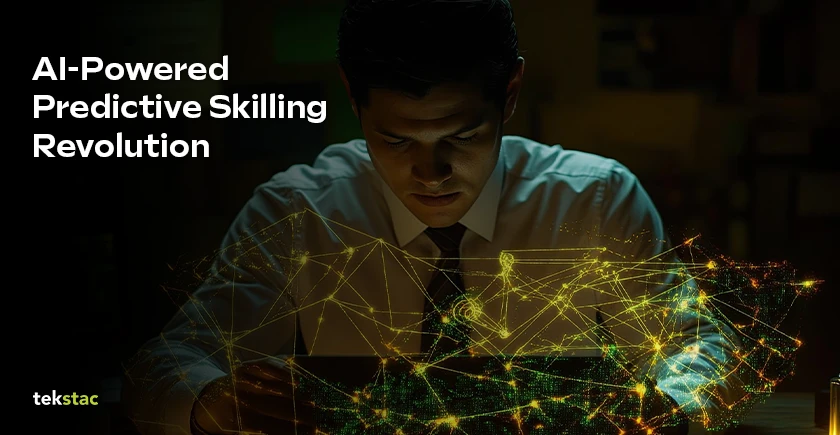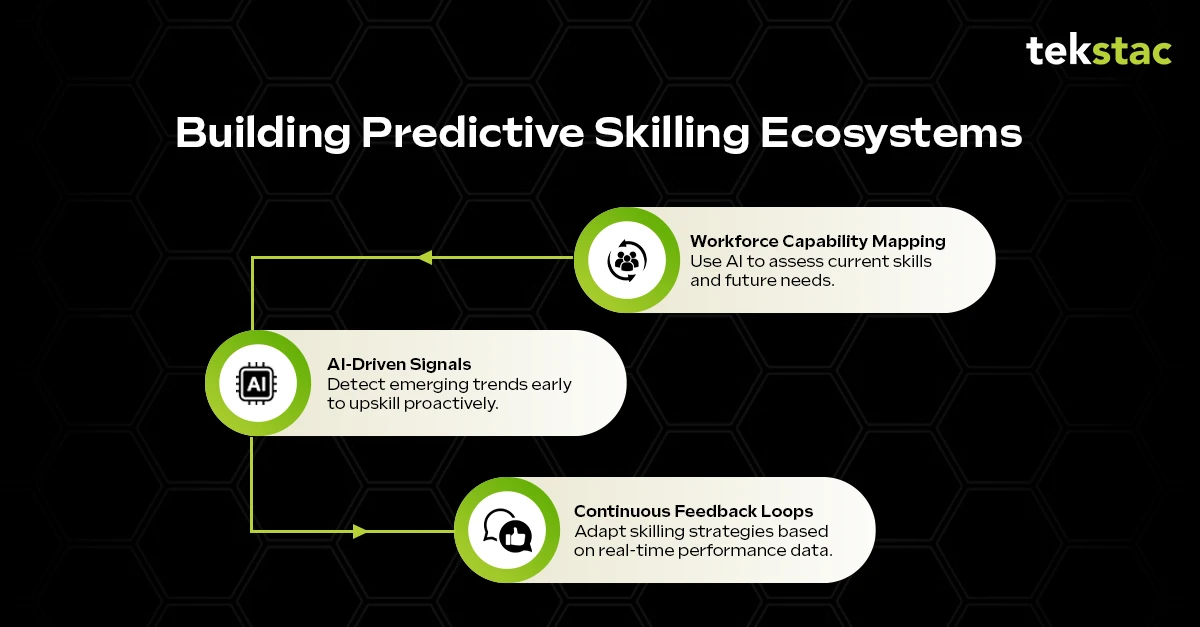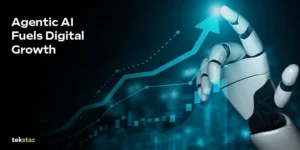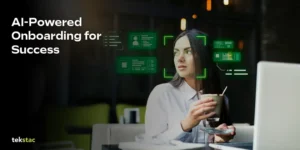Predictive Skilling: Ends Skill Gaps Before They Begin

For years, companies have tackled workforce development like plugging holes in a sinking ship—spot a problem, run some training sessions, and hope it’s enough to keep you afloat. In a world shaped by Generative AI, that skilling model isn’t just outdated—it’s dangerous. Skill gaps aren’t shrinking; they’re multiplying. While AI capabilities race ahead, organizations playing “catch-up” only fall further behind.
Predictive Skilling: Preparing Your Workforce for the Future
A handful of forward-thinking businesses have stopped trying to “patch gaps” altogether. Instead of reacting to skill deficiencies after the fact, they’re predicting future needs and training for them before they become urgent. This approach is all about predictive skilling ecosystems, which leverage generative AI to ensure employees aren’t just ready for the present—they’re primed for whatever the market demands next.
Why Chasing Skills No Longer Works
Traditional thinking assumes you can identify skill shortages, run a training program, and magically achieve alignment with business goals. This might have worked when industries moved at a slower pace. But when markets can pivot overnight, by the time you’ve identified one shortfall, the industry’s already shifted again.
A global logistics giant in 2023 found this out the hard way. After investing millions in retraining employees to use AI optimization tools, they discovered that competitors had already adopted generative AI to predict demand fluctuations in real time. By the time the giant’s employees were fully trained, it had lost critical market share to nimbler rivals.
The lesson is pretty stark: unless you can skill at the speed of business, you risk stagnating. Generative AI now offers a way to anticipate and fill skills before they become bottlenecks.
From Skill Gaps to Predictive Ecosystems
Predictive skilling ecosystems, powered by generative AI, flip the entire paradigm. Instead of frantically closing gaps, they aim to keep gaps from forming in the first place. Here’s how they do it:
- Foresight, Not Hindsight: AI analyzes your workforce capabilities, upcoming tech shifts, and emerging market demands. It then forecasts the skills your people will need in the next 6 to 24 months.
- Personalized Learning Paths: Each employee gets a growth map tailored to both current responsibilities and future roles they’re likely to step into.
- Ongoing Updates: As the market changes, so do these skilling programs. They adapt in real time, ensuring that development plans stay relevant and employees stay ahead of the curve.
Real-World Impact
A multinational insurance company made headlines in 2024 by rolling out a predictive skilling ecosystem. Instead of anxiously watching rivals, they chose to be proactive. They spotted that AI would soon reshape underwriting, so they used generative AI to build specialized training paths for their underwriters—teaching them to interpret AI-generated risk models and make quicker, more accurate decisions.
Within a year, claims-processing times fell by 40%, and underwriting accuracy soared. But the true power lay in how this approach kept evolving. Even as AI technologies advanced, their workforce advanced too, widening a competitive gap that competing insurers struggled to close.
Building Predictive Skilling Ecosystems
Shifting to a predictive model isn’t a snap of the fingers, but it is essential. Here are the core steps:

- Workforce Capability Mapping: Use AI tools to create a real-time snapshot of your current workforce skills, matched against your future needs.
- AI-Driven Signals: Rather than waiting for a crisis, let AI alert you to emerging technologies or market trends so you can train your people before those skills become must-have.
- Continuous Feedback Loops: As results roll in—from KPIs to employee performance—keep refining your skilling priorities and methods. Generative AI adapts as you learn.
Companies that master this process aren’t just investing in employees; they’re making sure the organization remains vital, no matter how fast the market pivots.
What Leaders Need to Know
For Chief Transformation Officers, Chief Learning Officers, and really any C-suite leader, the path is surprisingly clear: throw out outdated skilling models and embrace predictive ecosystems. The cost of waiting is huge—lost opportunities, stunted growth, and slipping market position. In contrast, the payoff for acting now can be nothing short of transformational.
Predictive skilling doesn’t just help your workforce keep up; it aligns people strategy with business strategy, ensuring that you’re prepared for tomorrow’s challenges. Once you stop chasing skills and start defining the future, you’ll find you’re no longer patching holes—you’re sailing ahead of the storm.





